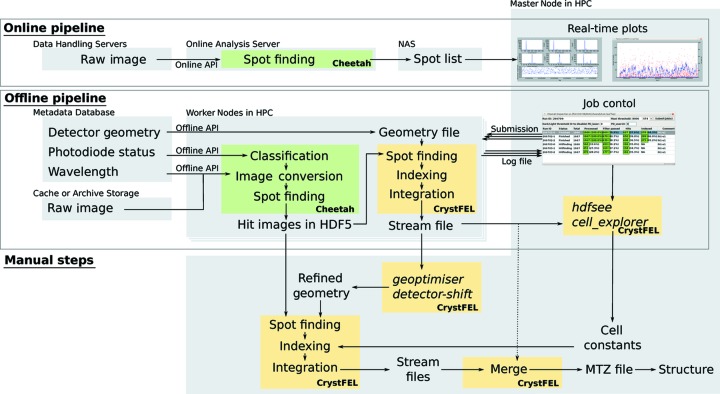Figure 2.
Typical flow of data in the pipeline. The online pipeline finds spots on images and provides real-time feedback on hit rates and detector saturation. The offline pipeline runs spot finding again and outputs hit images in the HDF5 format. The images are then processed by CrystFEL. In time-resolved experiments, excited and non-excited images are classified by the photodiode status. Users optimize parameters based on the pipeline output and re-run CrystFEL before final merging. If the refined parameters are known beforehand, then they can be used in the pipeline and the stream files from the pipeline can be immediately merged (dotted line).

